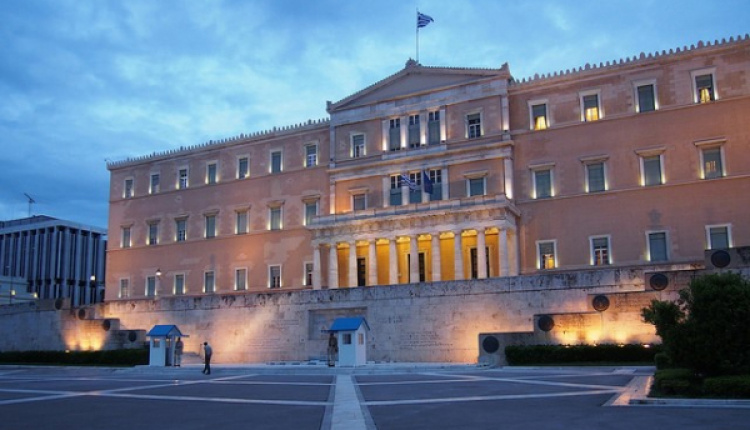The History Of Syntagma Square
- by XpatAthens
- Sunday, 20 June 2021

Syntagma Square is the central square of Athens and the second largest in Greece, after Spianada Square in Corfu, and is included in the list of the 100 largest squares in the world. It has always been the promenade square of the city and it was the gathering point for the cream of Athenian society for many years.
Its history begins in the early 1830s when Athens' population was about 7,000, and the area where the square stands was called Perivolakia. When the palace of King Otto was set to be built there, it was named Palace Square.
The specific location was chosen because the site was the highest point in central Athens, offering splendid views of the Acropolis and the Parthenon, and the Saronic Gulf. Construction work started in 1836 and was completed in 1843. That year though, the name of Palace Square changed once again. On September 3, 1843, the square was renamed Constitution Square, as Otto was forced to cede to the Greek people gathered in front of the palace demanding a constitution.
Syntagma Square began to assume its modern form after 1846 from the Bavarian Michael Hoch, who worked with the architect Leo von Klenze. The square was divided into two parts. The upper square (the eastern part), which until the end of the 19th century was still called “Palace Square”, today is known as “Parliament Square” or “the Monument of the Unknown Soldier.” The lower square (western part), is known as Bacchus Square or the Garden of the Muses. The two sections were on two different levels and were joined by a marble staircase.
When the area of the Monument of the Unknown Soldier was created, the upper part was cut off from the rest of the square. The Monument was built in 1929-1930 by the architect Emmanuel Lazaridis. Its central point is a representation of a fallen Ancient Greek soldier, created by sculptor Fokion Rok. On both sides, to the left and right of the monument, there are bronze plaques with the names of battles the Greeks fought from 1821 until today. The Monument is guarded on a 24-hour basis by the soldiers of the Presidential Guard, the well-known Evzones, with the changing of the guard taking place every hour; one of the living attractions of Athens.
The square is inextricably linked to the historical events taking place in Greece over the centuries. It has been a place of demonstrations and social upheavals starting from September 3, 1843, until today.
An event that was a black mark on the history of Syntagma Square in Athens was the killing of several demonstrators on December 3, 1944. Less than two months after the country’s liberation from the Nazis, police shot at Greek People’s Liberation Army (EAM) demonstrators, thus starting almost two months of fighting in Athens, the so-called Dekemvriana, the precursor of the Greek Civil War (1946-1949).
Syntagma Square has always played an important role in the daily life of Athenians. It was a meeting place, a favorite spot for a Sunday walk, as well as a place to gather together for musical presentations. It has also been the bonafide place for big party election rallies.
In the 19th century, impressive mansions, luxury hotels, and cafes used to surround the square, giving it a true cosmopolitan flavor. In the 20th century, however, the face of Syntagma Square changed drastically and the mansions were replaced by concrete-and-glass modern office buildings housing state agencies and businesses. Other than the Greek Parliament, the Pallis Mansion is the only old building that survived the modernization of the capital.
To read this article in full, please visit: greekreporter.com
To read this article in full, please visit: greekreporter.com
Photo Credit: Dario Sušanj



